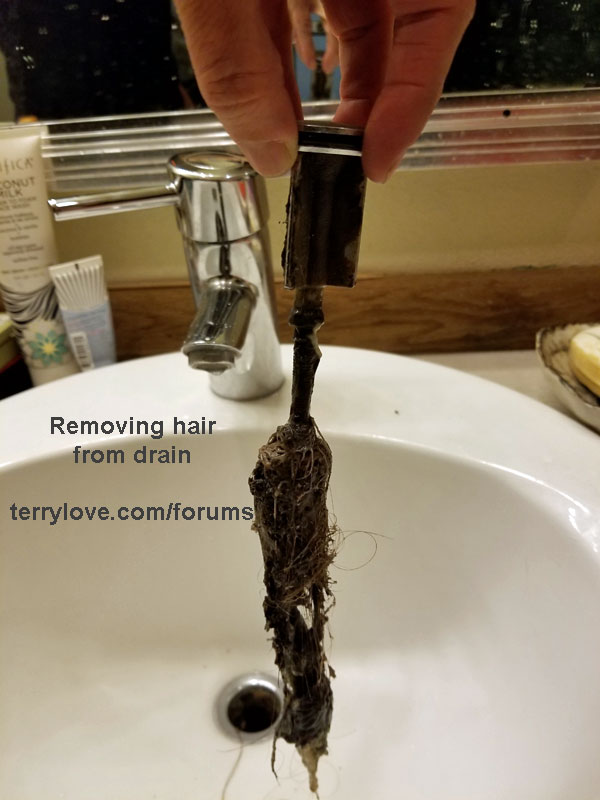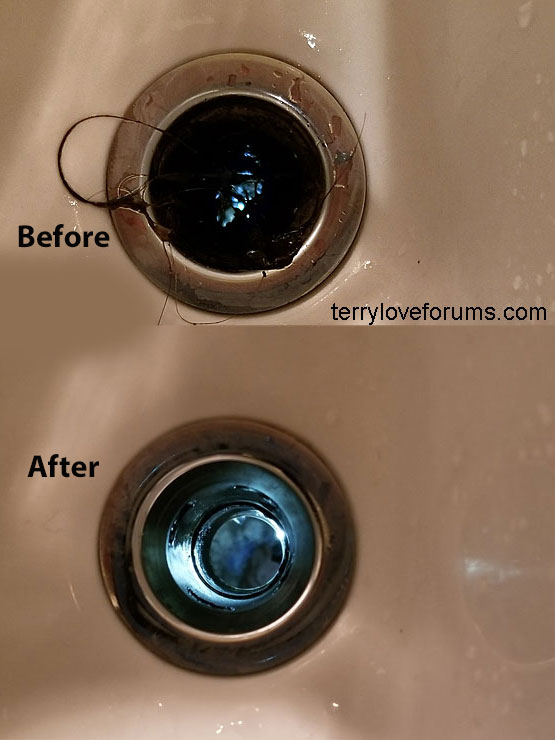Pardon chiming in at this late date, but I had a problem today with the double sink in my kitchen not draining and I think my experience might help someone in a similar situation.
It started when I tried to run several baskets of moldy strawberries and an old head of cauliflower through the disposal unit. The water backed up and there was zero drainage. I tried plunging it on the disposal side while pressing the strainer basket into the drain on the other side so as to develop pressure, to no avail. I removed the clean-out plug under the sink and ran a manual 8-foot long, 1/4-inch diameter snake through the drain line a couple of times, each time reinserting the plug and testing for drainage, but there was no improvement. Thinking I needed to snake ("rod") the line farther, I went to the store and purchased a 15-foot long, 1/4-inch diameter manual snake and ran it a couple of times, too, but there was no improvement. A visit to the crawlspace told me that the 8-foot snake was longer than necessary to reach the main sanitary line under the house. Flushing the toilet and running outside to peer down the main sewer clean-out confirmed that the main line was draining fine. I tried lye, spooning it into the sink clean-out with a long-handled bar spoon with the intent of maximizing the lye concentration closer to the clog, reinserting the plug, filling the sink drain with water and waiting a while; this didn't work. I then shot a measured amount of water into the clean-out under the sink with a Stream Machine water gun (600 milliliters), captured what came out of the clean-out and measured it, and it was the same volume that went in, to within a percentage point or two. By this time I'm sweating heavily (it's a hot August afternoon) and I'm getting very frustrated. This damn thing seemed hexed. After a cool-down rest I decided to try once again with the 8-foot snake, but this time I ran it in slowly, as if I were picking a lock, feeling the resistance inch by inch. Wherever there was resistance, I ran the snake forward and backward half a dozen times, as if using a file. Eventually, when I retracted the snake, the head pulled out a blob of what appeared to be fresh vegetable fiber (the cauliflower leaves) mixed with oil or grease. I reinserted the clean-out plug and ran a quick test with about a quart of water. It was draining now, so I filled the sink with hot water a couple of times to which I added some liquid dish detergent and let it drain. I also filled the side with the disposal unit with hot, soapy water, plugged the other drain with the strainer basket, then let it drain with the disposal motor running, acting as a low-efficiency turbo pump to boost the drain velocity and pressure.
In retrospect, it appears that the clog must have been a gooey, resilient mass that allowed the snake to easily pass through it, but then closed up again when the snake was withdrawn, much like a self-sealing automobile tire. The clog was eventually cleared by being persistent and using my sense of touch to feel where the clog might be, then working the area vigorously for an extended time.
A final note — I don't dump grease down my kitchen sink drain and I try to avoid putting any grease into the drain by wiping oily or greasy utensils, dishes, pots and pans with paper towels before washing them. I can barely remember the last time I had a clog in that sink — was it 10 years? 15 years? However, no matter how careful one is, even small amounts of oil will eventually accumulate on the pipe walls, acting as a magnet for plant fibers, hair, and so on.


